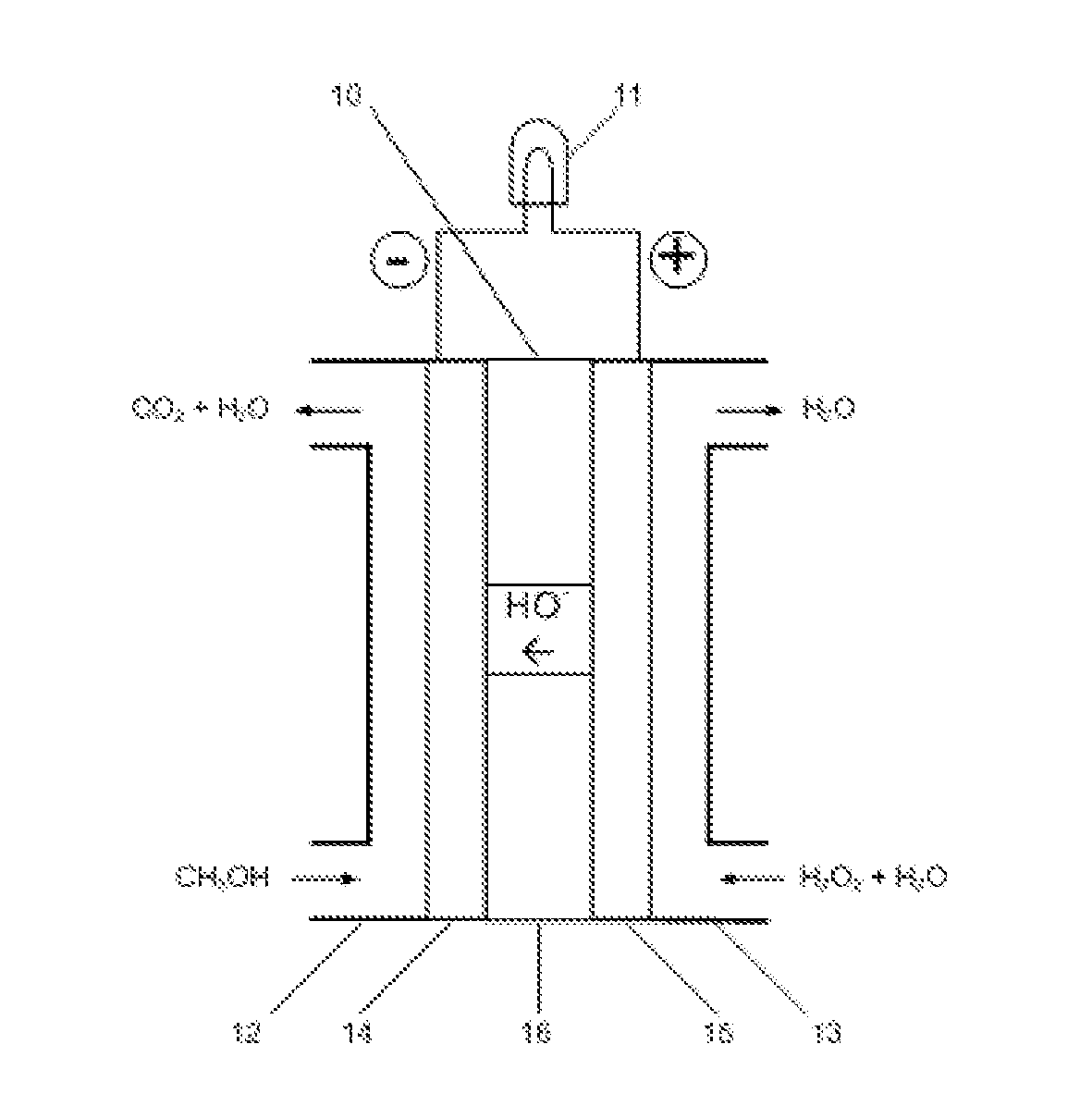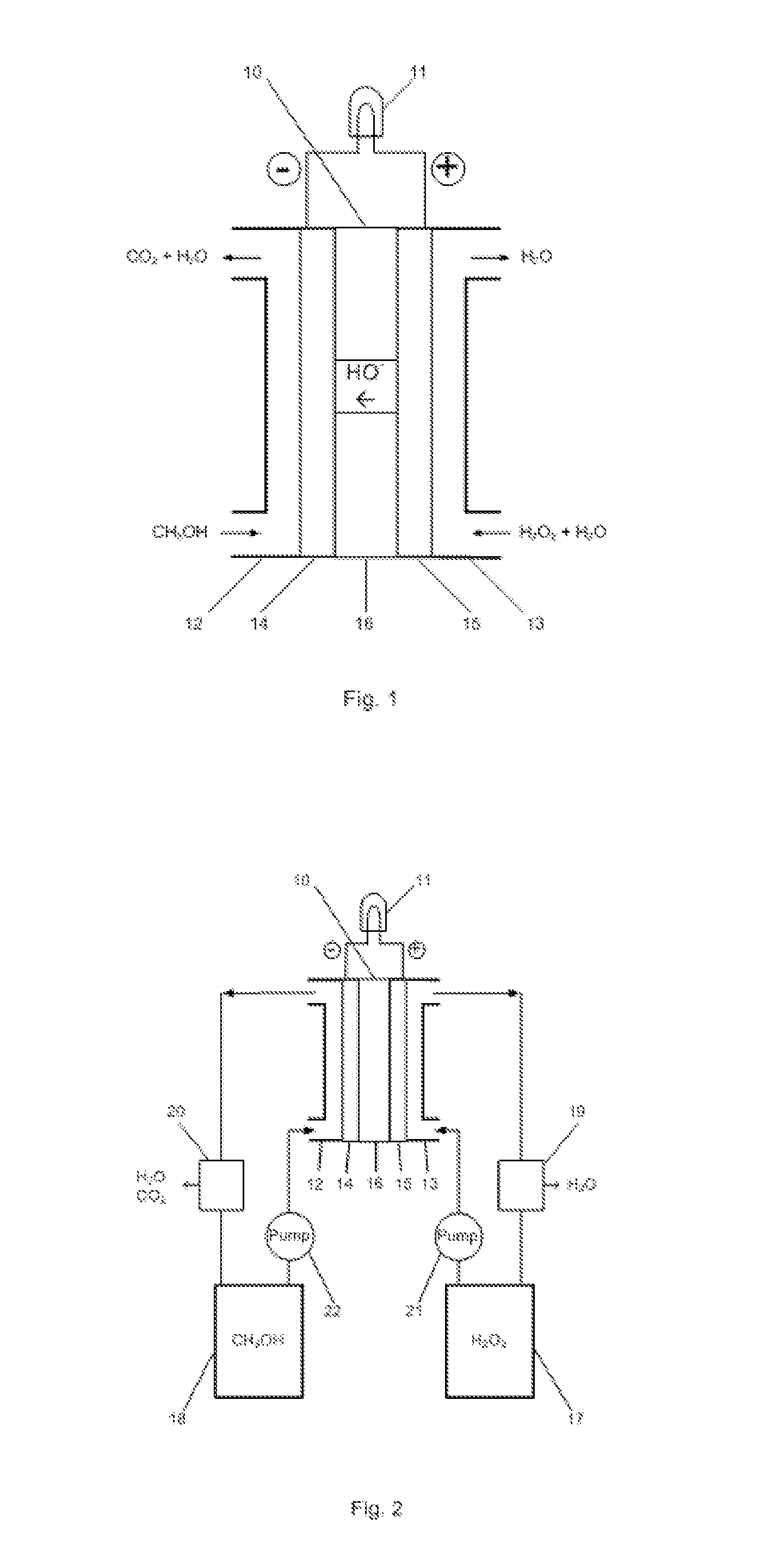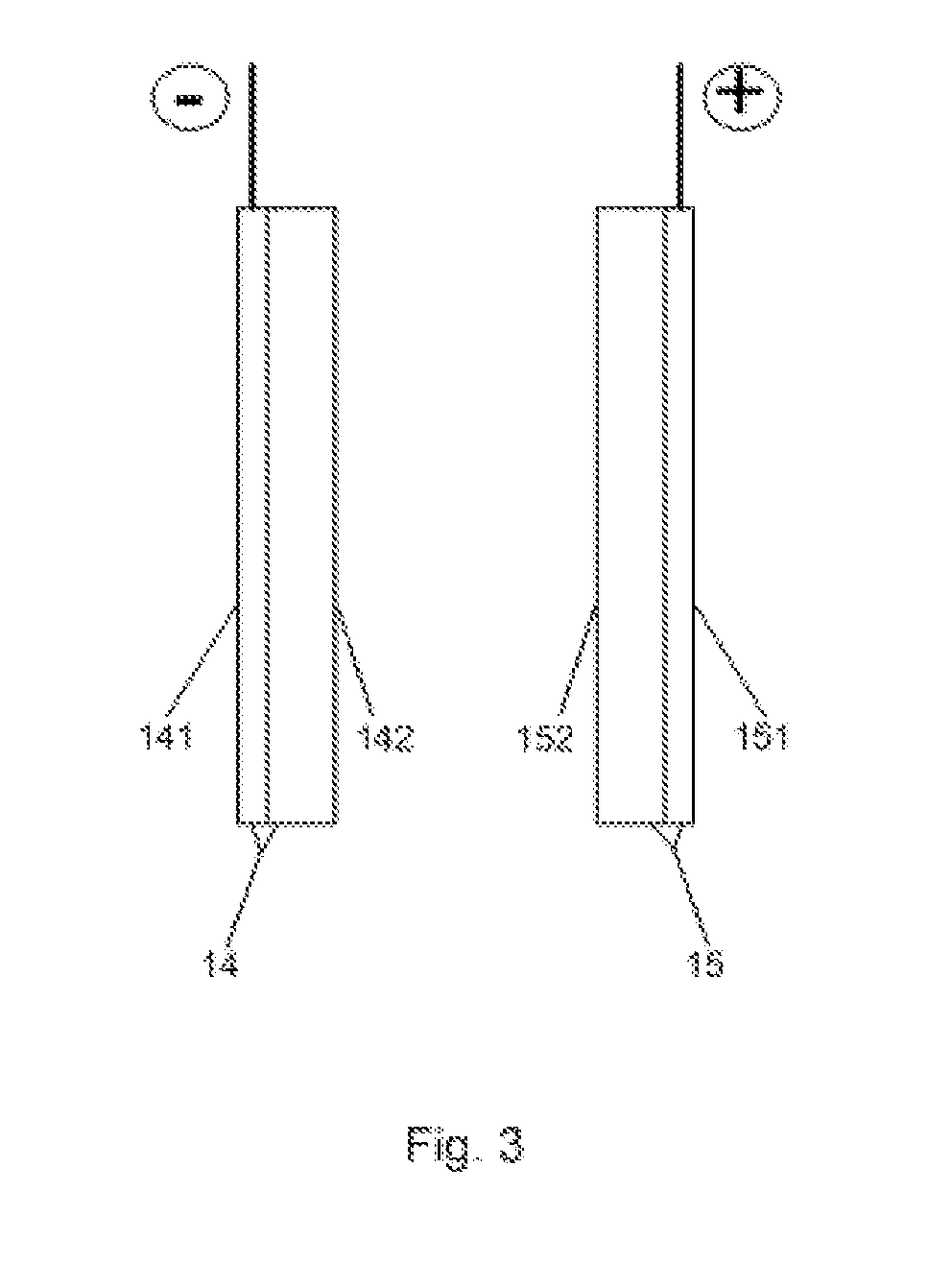Methanol and Hydrogen Peroxide Fuel Cell with Hydroxyl Ion Exchange Membrane
a fuel cell and hydroxyl ion exchange technology, applied in the field of fuel cells, can solve the problems of fuel cell efficiency decline, catalyst poisoning or cathode sintering, energy density still lower than desired for many applications,
- Summary
- Abstract
- Description
- Claims
- Application Information
AI Technical Summary
Benefits of technology
Problems solved by technology
Method used
Image
Examples
Embodiment Construction
[0011]The embodiments of the present invention are described as following. As shown in FIG. 1, liquid methanol (CH3OH) is fed to an anode compartment 12 in the fuel cell 10. The anode 14 is electrically connected with a load 11 that consumes electrical power. Liquid hydrogen peroxide (H2O2) is fed to a cathode compartment 13 in the fuel cell. The cathode 15 is also connected with the electrical load 11. The anode 14 and cathode 15 are in contact with and separated by a hydroxyl ion electrolyte membrane 16.
[0012]In the fuel cell, hydrogen peroxide is reduced producing hydroxyl ions at the cathode 15:
3H2O2+6e−→6OH−
and methanol is oxidized at the anode 14:
CH3OH-6e−+6OH−→CO2+5H2O
The hydroxyl ions generated at the cathode 15 permeate through the membrane 16 to the anode 14 which react with the hydrogen peroxide and produce carbon dioxide and water. The total reaction is:
CH3OH+3H2O2═CO2+5H2O
[0013]The anode 14 is formed of porous conductive substrate 141 (FIG. 3) with platinum-ruthenium-pa...
PUM
| Property | Measurement | Unit |
|---|---|---|
| temperature | aaaaa | aaaaa |
| electrically conductive | aaaaa | aaaaa |
| ion-conductive | aaaaa | aaaaa |
Abstract
Description
Claims
Application Information
 Login to View More
Login to View More - R&D
- Intellectual Property
- Life Sciences
- Materials
- Tech Scout
- Unparalleled Data Quality
- Higher Quality Content
- 60% Fewer Hallucinations
Browse by: Latest US Patents, China's latest patents, Technical Efficacy Thesaurus, Application Domain, Technology Topic, Popular Technical Reports.
© 2025 PatSnap. All rights reserved.Legal|Privacy policy|Modern Slavery Act Transparency Statement|Sitemap|About US| Contact US: help@patsnap.com



